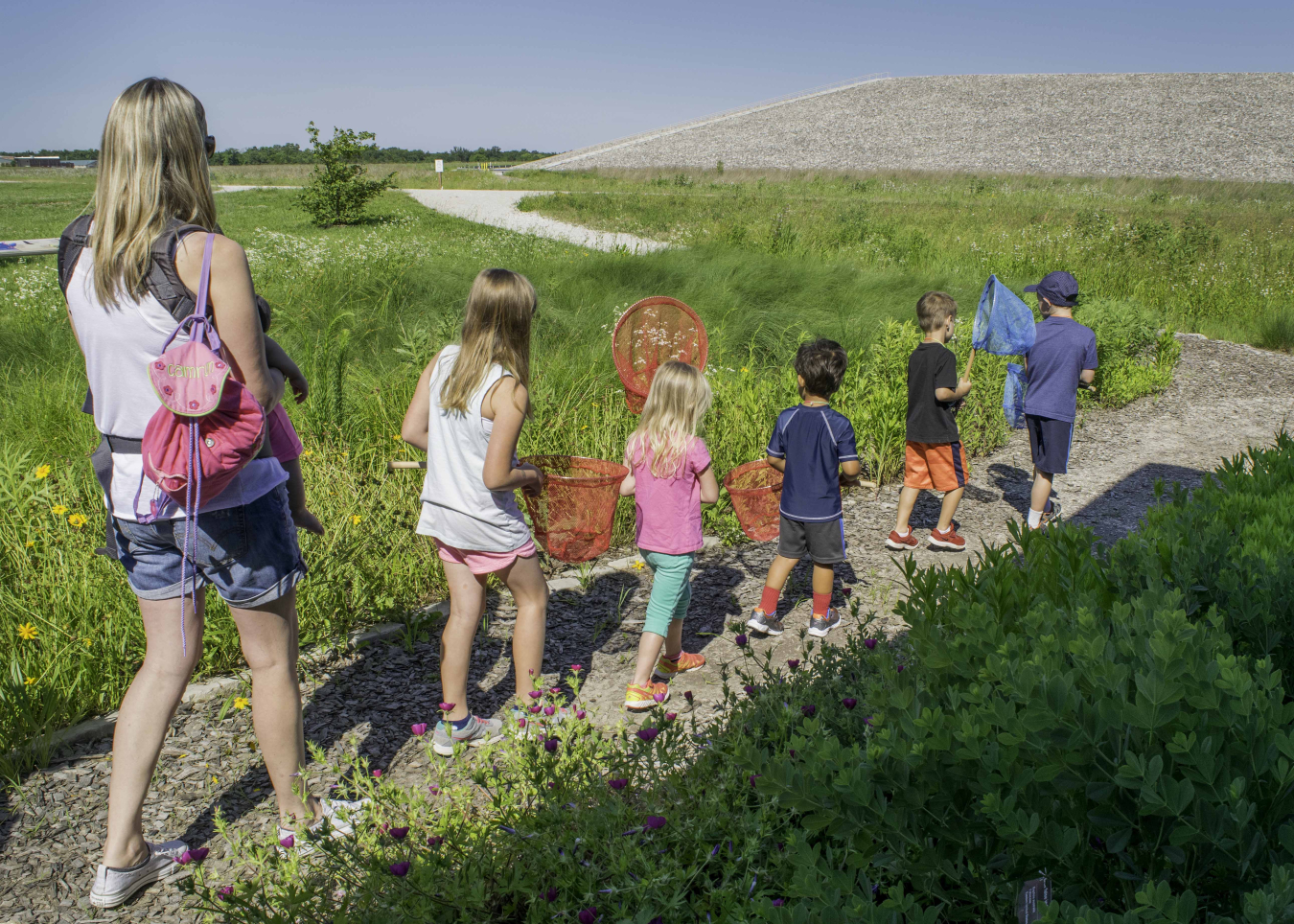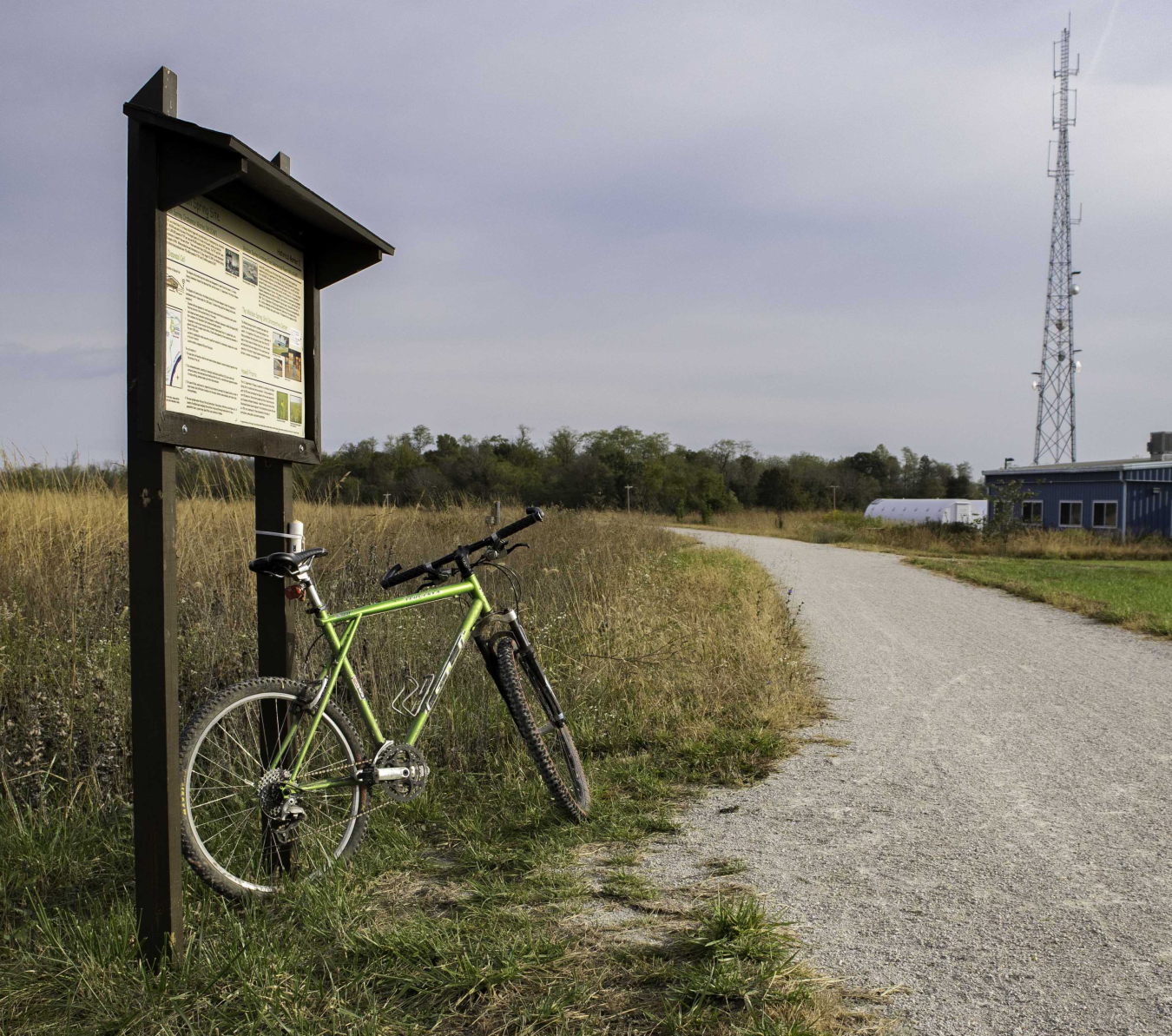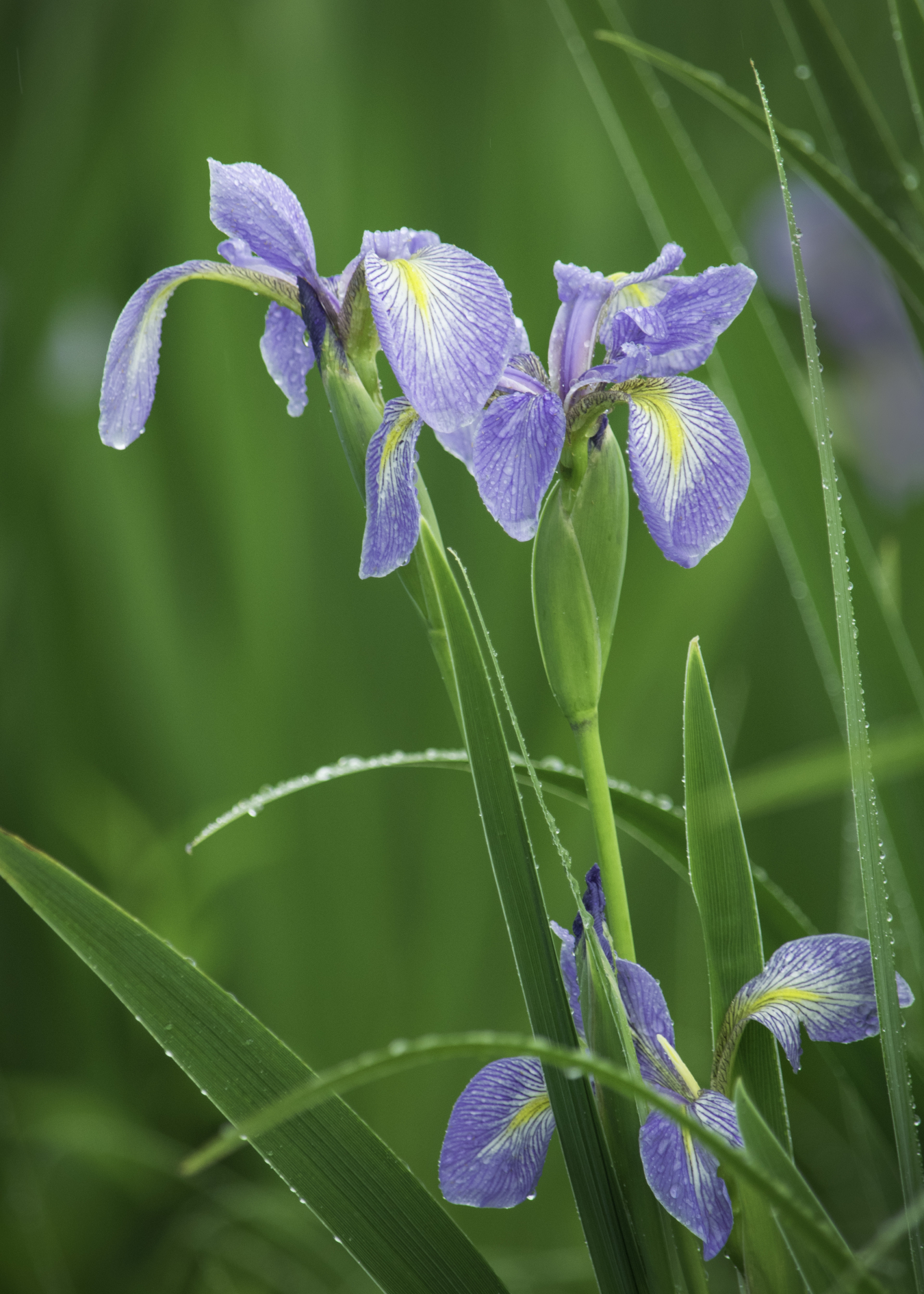
Upon visiting the Weldon Spring Site in St. Charles, Missouri, it doesn’t take long to see the positive impacts that a restored site can have on the local community and surrounding area. It’s common to see several cars in the parking lot and a steady stream of mountain bikers riding the site’s Hamburg Trail while taking in nature’s beauty. People can also be seen visiting the site’s Interpretive Center and walking to the top of the disposal cell for one of the most spectacular views in St. Charles County. What was once viewed by the public as a run-down, contaminated processing plant has been revitalized for beneficial reuse as a community educational center and recreational site.
The site has a rich and complex history, including major contributions to World War II and the Cold War. From the early to mid-1940s, the U.S. government acquired more than 17,000 acres for the U.S. Army to operate a plant that produced 750 million tons of explosives to support the country’s efforts during World War II. In the mid-1950s, more than 200 acres of the former ordnance works property were transferred to the U.S. Atomic Energy Commission for construction of a plant to process uranium in support of the Cold War.
After the plant closed in 1967, the site remained largely dormant under caretaker status for nearly two decades until remediation work began. Site cleanup resulted in a 41-acre disposal cell surrounded by 150 acres of restored native prairie collectively known today as the Weldon Spring Site. As part of a long-term surveillance and maintenance process, the U.S. Department of Energy Office of Legacy Management (LM) operates the Interpretive Center to communicate the historical legacy of the site, provide educational and research opportunities, and share current information with the public. Much of the surrounding former U.S. Army land is now owned and operated by the Missouri Department of Conservation (MDC).
Because of the site’s plant habitat and its unique position within the center of two large conservation areas, it’s an ideal location for showcasing community and conservation reuse opportunities to the public. The restored native prairie and native plant garden allow children and adults to experience a remediated site in a natural setting.
The Interpretive Center is an asset to the community. It serves an average of more than 25,000 visitors per year and offers a variety of programs and special events for kindergarten through adult ages Meeting rooms are available after hours for use by community organizations. The interpretive staff is knowledgeable about the site history, science-oriented, and trained in accordance with National Association for Interpretation (NAI) standards. Several staff members are also NAI Certified Interpretive Guides and the Interpretive Center Manager is a Certified Interpretive Trainer. The programs they have developed meet the Missouri Department of Elementary and Secondary Education’s Grade Level Expectations, which are grade-by-grade targets for student instruction.
On a typical day, personnel can be found actively involved in teaching on-site classes, hosting events, conducting outreach, providing tours of the Interpretive Center, or serving as enthusiastic nature guides on site property hikes.
A prime example of conservation reuse at the site is the 150-acre native Howell Prairie. The prairie was originally seeded with more than 80 native Missouri species to recreate the type of prairie that would have existed during pre-settlement times. Functionally, it serves as an effective erosion barrier, while also providing high-quality habitat to support pollinators and numerous wildlife species, as it blends seamlessly with the surrounding conservation areas. As seasons progress and change, so does the picturesque background of the prairie. Plants such as the prairie blazing star, gray-headed coneflower, and Southern blue flag iris are a few of the plants that thrive once again in the area as they did long ago.
In 2004, Howell Prairie was complemented with a beautiful native plant educational garden. Adjacent to the Interpretive Center, it is equipped with a walking path and informational markers for identifying native Missouri plant species. The garden is home to insects, birds, and more than 200 species of native plants. Currently, the prairie and the garden are used by site staff to educate the public and generate enthusiasm for promoting native plant habitat. The Ruby-throated Hummingbird and gray treefrog are known to frequent the garden.
In addition to the native Howell Prairie, the Hamburg Trail provides another great example of conservation reuse. The trail was created through a cooperative agreement between LM, MDC, and the Missouri Department of Natural Resources by repurposing a former haul road used during remediation into a hiking and biking trail. This 8-mile trail connects the site to a vast network of trails in surrounding conservation areas and the Katy Trail State Park. To communicate the site’s historic legacy to the public, historical markers are placed along the trail.
While the Weldon Spring Site has come full circle, it’s history will not be forgotten. As times have changed, so have the needs for the site and surrounding area. If not for the unique history of this site and its link to national defense, it is likely that commercial developments would currently exist in its place. We invite you to come visit us as we continue to improve the site, building upon the past to create a promising future.

In 2004, Howell Prairie was complemented with a beautiful native plant educational garden. Adjacent to the Interpretive Center, it is equipped with a walking path and informational markers for identifying native Missouri plant species. The garden is home to insects, birds, and more than 200 species of native plants. Currently, the prairie and the garden are used by site staff to educate the public and generate enthusiasm for promoting native plant habitat. The Ruby-throated Hummingbird and gray treefrog are known to frequent the garden.
In addition to the native Howell Prairie, the Hamburg Trail provides another great example of conservation reuse. This trail was created, under a cooperative agreement between LM, MDC, and the Missouri Department of Natural Resources, by repurposing a former haul road used during remediation, into a hiking and biking trail. This 8-mile trail connects the site to a vast network of trails in surrounding conservation areas and the Katy Trail State Park. To communicate the site legacy to the public, historical markers are placed along this trail.

The Weldon Spring Site has come full circle, but its history will not be forgotten. As times have changed, so have the needs for the site and surrounding area. If not for the unique history of this site and its link to national defense, it is likely (based on bordering lands) that housing developments would currently exist in place of the Interpretive Center, the site, and its connection to the vast amounts of conservation and recreational areas.
Next on the horizon for the Weldon Spring Site is the design and construction of a new Weldon Spring Interpretive Center to replace the aging structures left over from the remediation era. Come visit us as we continue to build upon the past to create a promising future.
